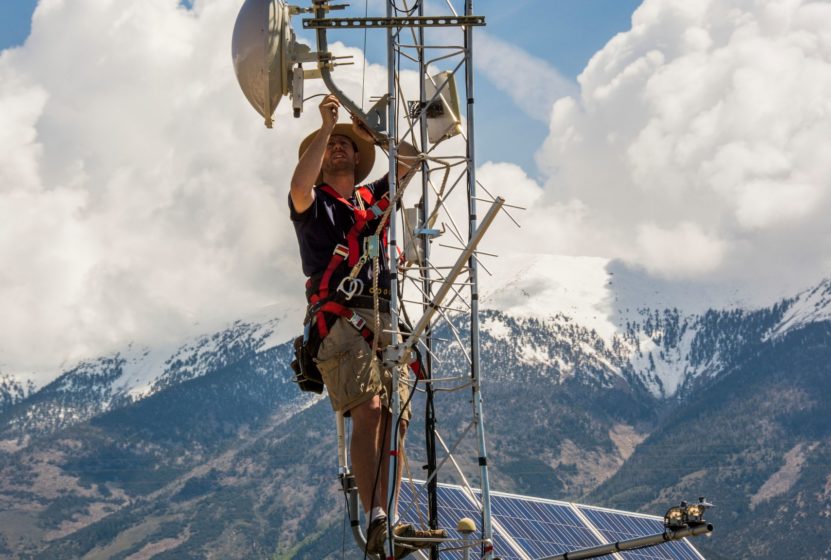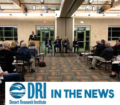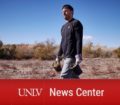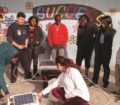Supporting Science Discovery
NEXUS Cyberinfrastructure creates the framework for gathering, processing and sharing scientific data
By Jane Palmer
July 1, 2016
In the arid desert near Boulder City, Nevada, scores of instruments collect a steady stream of climate and environmental data from around, and within, the solar panel arrays that stretch across the landscape. The gathered information will help optimize solar energy efficiency and also minimize future environmental impacts, but first this data needs to be transmitted, processed, understood and interpreted.
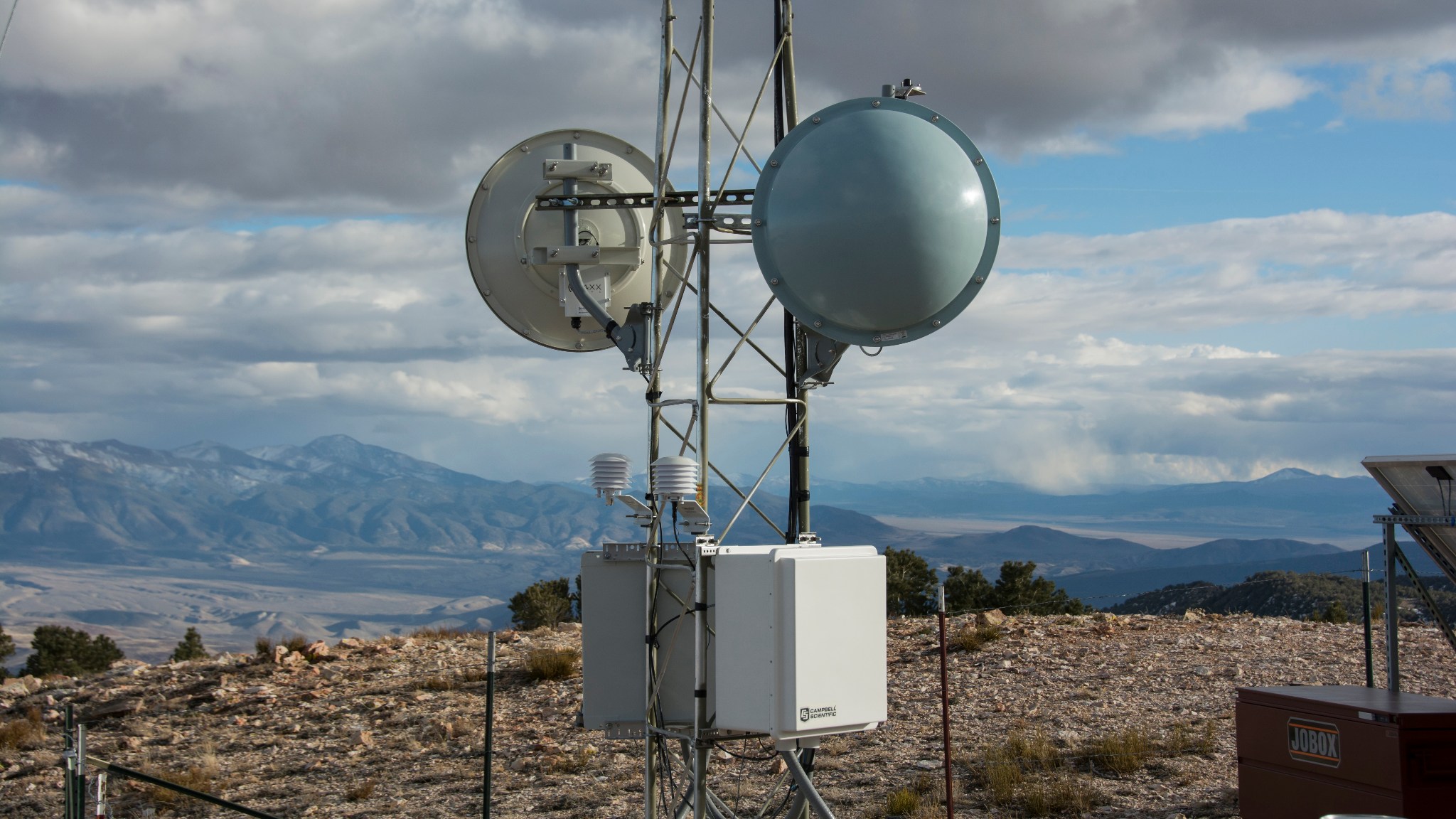
The cyberinfrastructure data transport network allows field scientists to make connections between equipment, database systems, the internet, and each other.
–Scotty Strachan Photo
The Nevada Research Data Center
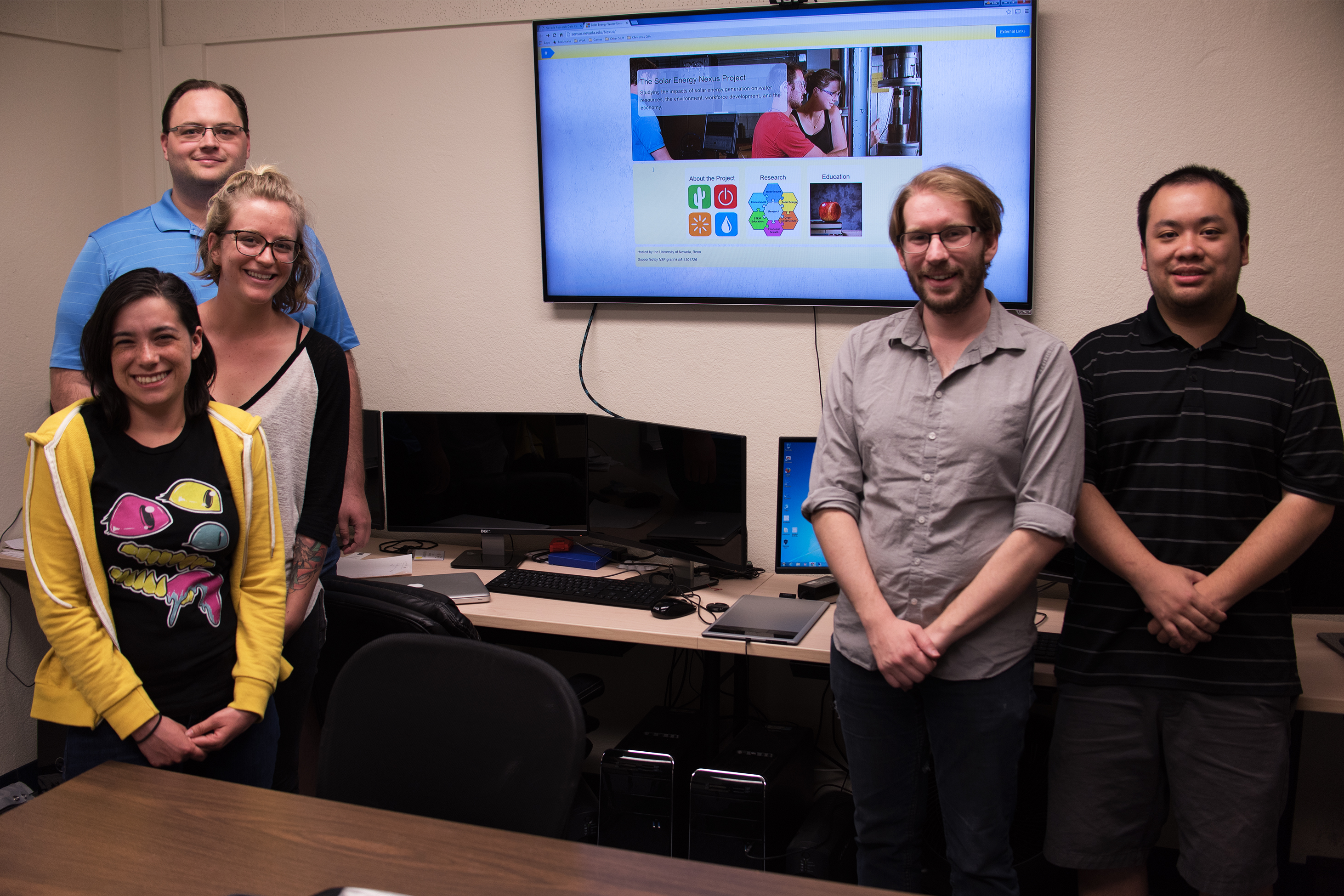
Eric Fritzinger, Alexandra Younkes, Hannah Munoz, Connor Scully-Allison, and Vinh Le
NRDC Development and Operation
–Alexandra Younkes Photo
Crafting the Foundation
 Students get to work on real problems and directly contribute to the CI mission. For undergraduate students Hannah Munoz, Samantha Grant, Matthew Salivar, and Royal Stewart at UNR that meant designing an app for the Android mobile platform for gathering climate data in the field. Instead of laboriously recording the data in a logbook and then having to transfer a day’s information onto a networked computer, now field technicians can simply use the app to gather the data and this quality assurance app streams the data to the NRDC, where it will be stored.“Our objective is to provide the field technicians with an effective method of creating documentation for their work and also provide them with a positive and satisfying experience when servicing these stations,” Munoz says.
Students get to work on real problems and directly contribute to the CI mission. For undergraduate students Hannah Munoz, Samantha Grant, Matthew Salivar, and Royal Stewart at UNR that meant designing an app for the Android mobile platform for gathering climate data in the field. Instead of laboriously recording the data in a logbook and then having to transfer a day’s information onto a networked computer, now field technicians can simply use the app to gather the data and this quality assurance app streams the data to the NRDC, where it will be stored.“Our objective is to provide the field technicians with an effective method of creating documentation for their work and also provide them with a positive and satisfying experience when servicing these stations,” Munoz says.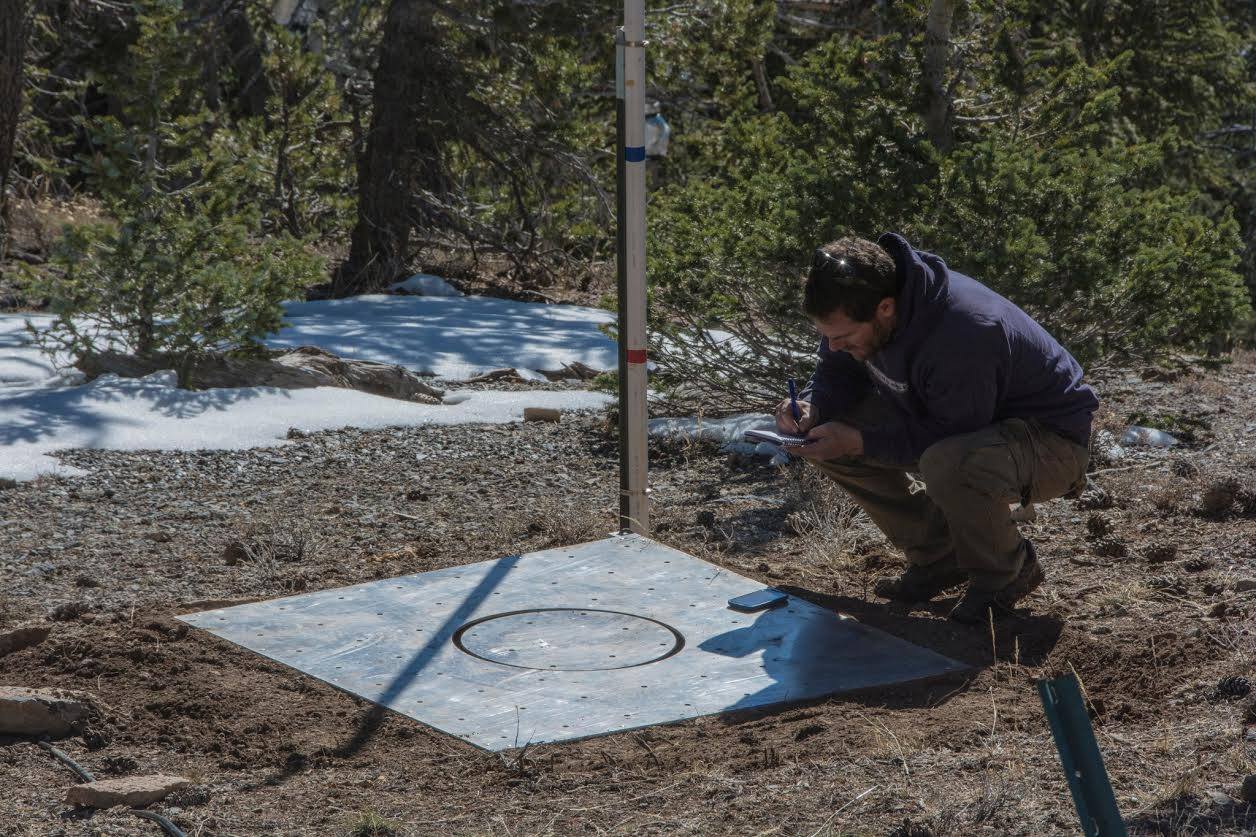
How technicians recorded data before the APP, Ben Trustman, Graduate Student, UNR
–Scotty Strachan Photo
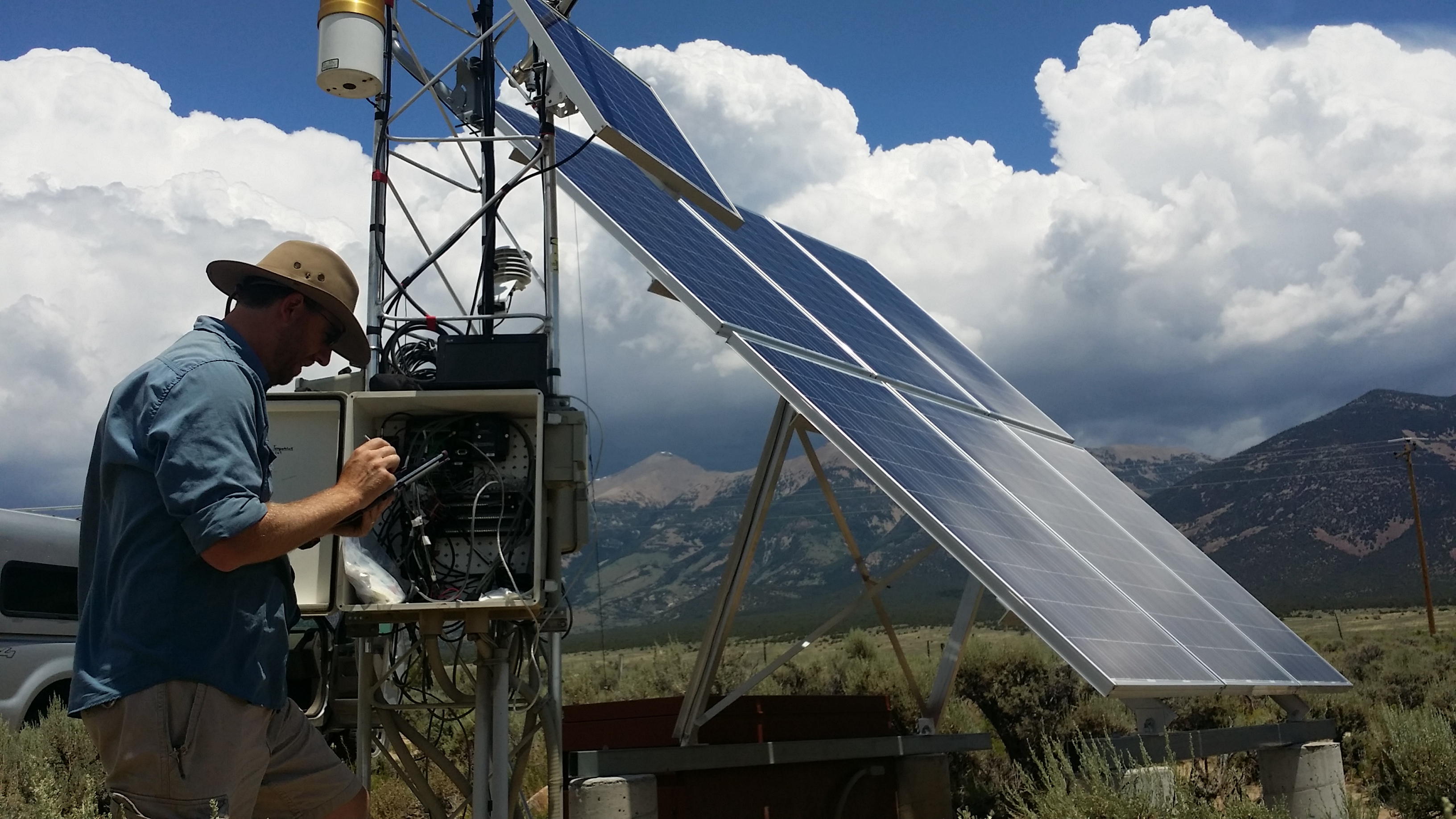
How technicians record data after the App, Scotty Strachan, Technician, UNR
–Scotty Strachan Photo

Contributing to a Unified National Cyberinfrastructure
In May 2016, the National Science Foundation (NSF) unveiled its research agenda for the next few decades in the form of nine big ideas. Prominent in the NSF list was “Harnessing Data for the 21st Century Science and Engineering.” The core mission of this big idea is to develop a cohesive, federated national scale approach to research data infrastructure-a mission encapsulated in the NSF Future Directions for Advanced Computing Infrastructure to Support U.S. Science and Engineering report for 2017-2020.
In this report, the NSF emphasizes its commitment to building a comprehensive, integrated, sustainable, and secure cyberinfrastructure (CI) that will accelerate research and education in science and engineering. The NSF believes that such a CI will create new capabilities for collaborations at multiple scales, from individuals to communities, to address far more complex problems of science and society than previously possible.
The NEXUS CI efforts are modeled on NSF objectives and guidelines and, in doing so, CI provides a solid foundation for data collection, data analysis and data communication within the state of Nevada. A primary objective of NEXUS CI is to create a new archetype for CI research and development that could potentially serve as a model for national CI efforts. When the Nevada Research Data Center became the newest Member Node to join NSF’s DataONE, it made such expertise available to other scientists and educators and it took a giant step forward in contributing to the futuristic NSF vision.
“We are proud that the Nevada Research Data Center is at the cutting edge of cyberinfrastructure development and helping build a solid infrastructure for the nation,” says Dr. Gayle Dana, NEXUS Project Director. “NEXUS CI is forging ahead on NSF’s objectives and it is proving to be a win-win for both Nevada and NSF.”




